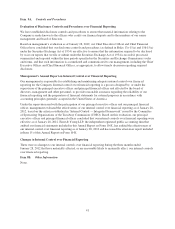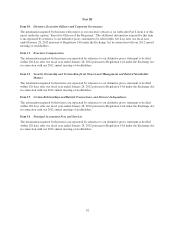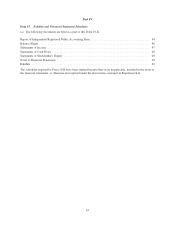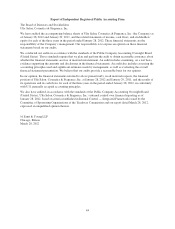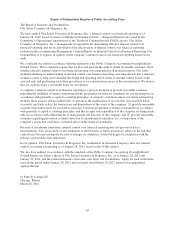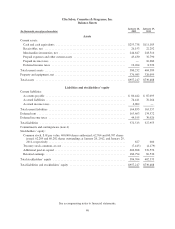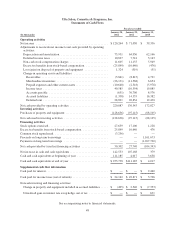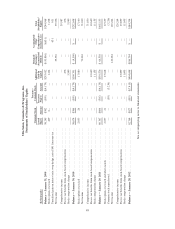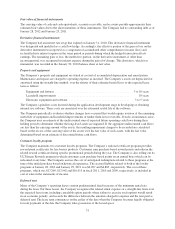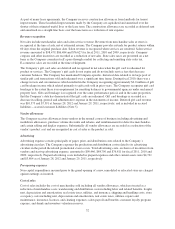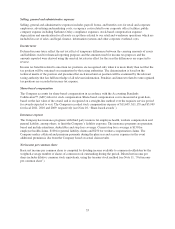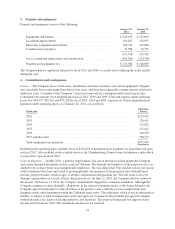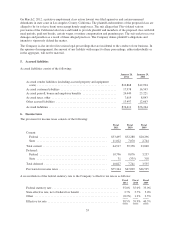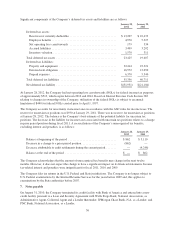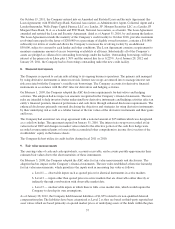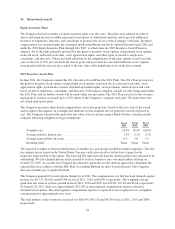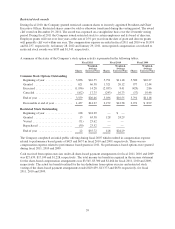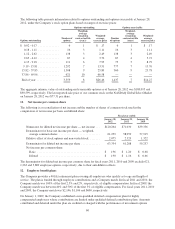Ulta 2011 Annual Report Download - page 54
Download and view the complete annual report
Please find page 54 of the 2011 Ulta annual report below. You can navigate through the pages in the report by either clicking on the pages listed below, or by using the keyword search tool below to find specific information within the annual report.Ulta Salon, Cosmetics & Fragrance, Inc.
Notes to Financial Statements
(In thousands, except per share data)
1. Business and basis of presentation
Ulta Salon, Cosmetics & Fragrance, Inc. (Company or Ulta) was incorporated in the state of Delaware on
January 9, 1990, to operate specialty retail stores selling cosmetics, fragrance, haircare and skincare products,
and related accessories and services. The stores also feature full-service salons. As of January 28, 2012, the
Company operated 449 stores in 43 states. All amounts are stated in thousands, with the exception of per share
amounts and number of stores.
The Company has determined its operating segments on the same basis that it uses to internally evaluate
performance. The Company has combined its three operating segments: retail stores, salon services and
e-commerce, into one reportable segment because they have a similar class of consumer, economic
characteristics, nature of products and distribution methods.
2. Summary of significant accounting policies
Fiscal year
The Company’s fiscal year is the 52 or 53 weeks ending on the Saturday closest to January 31. The Company’s
fiscal years ended January 28, 2012 (fiscal 2011), January 29, 2011 (fiscal 2010) and January 30, 2010 (fiscal
2009) were 52 week years.
Use of estimates
The preparation of financial statements in conformity with U.S. generally accepted accounting principles
(GAAP) requires management to make estimates and assumptions that affect the reported amounts of assets and
liabilities at the date of the financial statements and the reported amounts of revenues and expenses during the
accounting period. Actual results could differ from those estimates.
Cash and cash equivalents
Cash and cash equivalents include cash on hand and highly liquid investments with maturities of three months or
less from the date of purchase. Cash equivalents include amounts due from third-party credit card receivables
because such amounts generally convert to cash within one to three days with little or no default risk.
Receivables
Receivables consist principally of amounts receivable from vendors related to allowances earned but not yet
received. These receivables are computed based on provisions of the vendor agreements in place and the
Company’s completed performance. The Company’s vendors are primarily U.S.-based producers of consumer
products. The Company does not require collateral on its receivables and does not accrue interest. Credit risk
with respect to receivables is limited due to the diversity of vendors comprising the Company’s vendor base. The
Company performs ongoing credit evaluations of its vendors and evaluates the collectability of its receivables
based on the length of time the receivable is past due and historical experience. The allowance for receivables
totaled $556 and $257 as of January 28, 2012 and January 29, 2011, respectively.
Merchandise inventories
Merchandise inventories are stated at the lower of cost or market. Cost is determined using the weighted-average
cost method and includes costs incurred to purchase and distribute goods. Inventory cost also includes vendor
allowances related to co-op advertising, markdowns, and volume discounts. The Company maintains reserves for
lower of cost or market and shrinkage.
50



